11 Endangered Animals in Spain
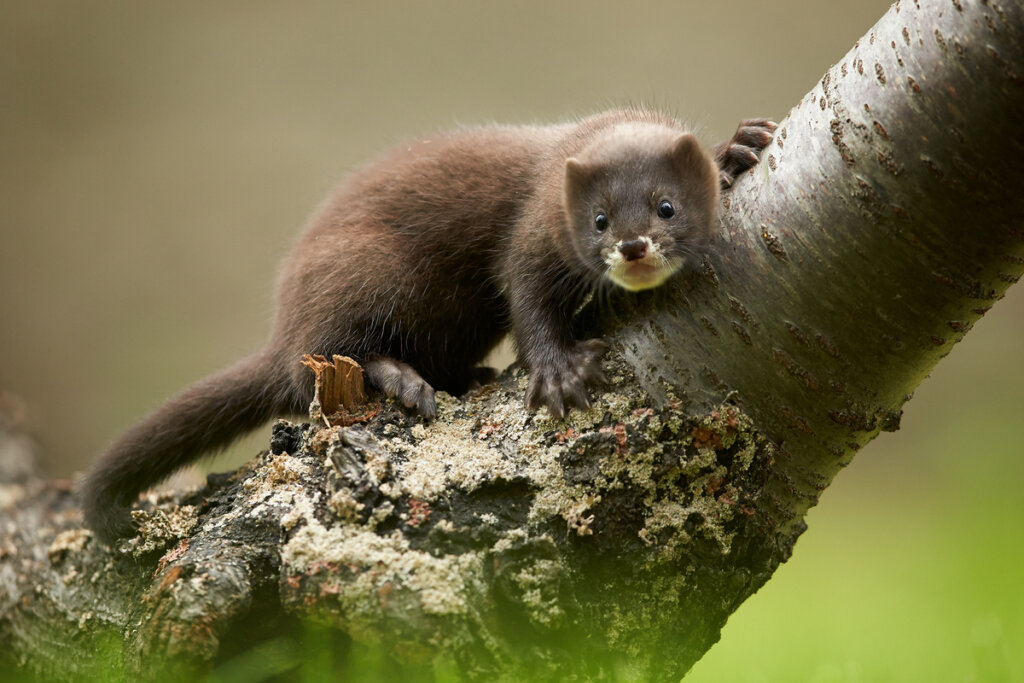
When it comes to extinction, the first animals that come to mind are often those that live in far countries, such as the rhinoceros, the blue whale, or the polar bear. However, if you’re a European, you don’t need to go that far, as there are also animals in danger of extinction in a country like Spain. Read on to find out all about the endangered animals in Spain.
We are facing the most serious extinction event in history: 1 in 8 birds in the world, 1 in 4 mammals, 1 in 3 amphibians, and 70% of plants are in danger of disappearing forever. Knowledge is always the first step to conserving, so don’t stop reading.
11 endangered animals in Spain
There are a total of 61 endangered animals in Spain, as well as 127 species of plants in the same situation. Another 139 species of Iberian flora and fauna are in a vulnerable state, meaning a total of 337 taxa are in danger of disappearing. We’re going to address some of the most pressing situations here, but they all require the same conservation effort.
1. Black stork (Ciconia nigra)
This migratory bird lives in forests and mountains, ranging from Portugal to China. It usually winters in Africa, but like the white stork (Ciconia ciconia), it often chooses to stay on the peninsula. This change is due to the increase in temperatures caused by global warming.
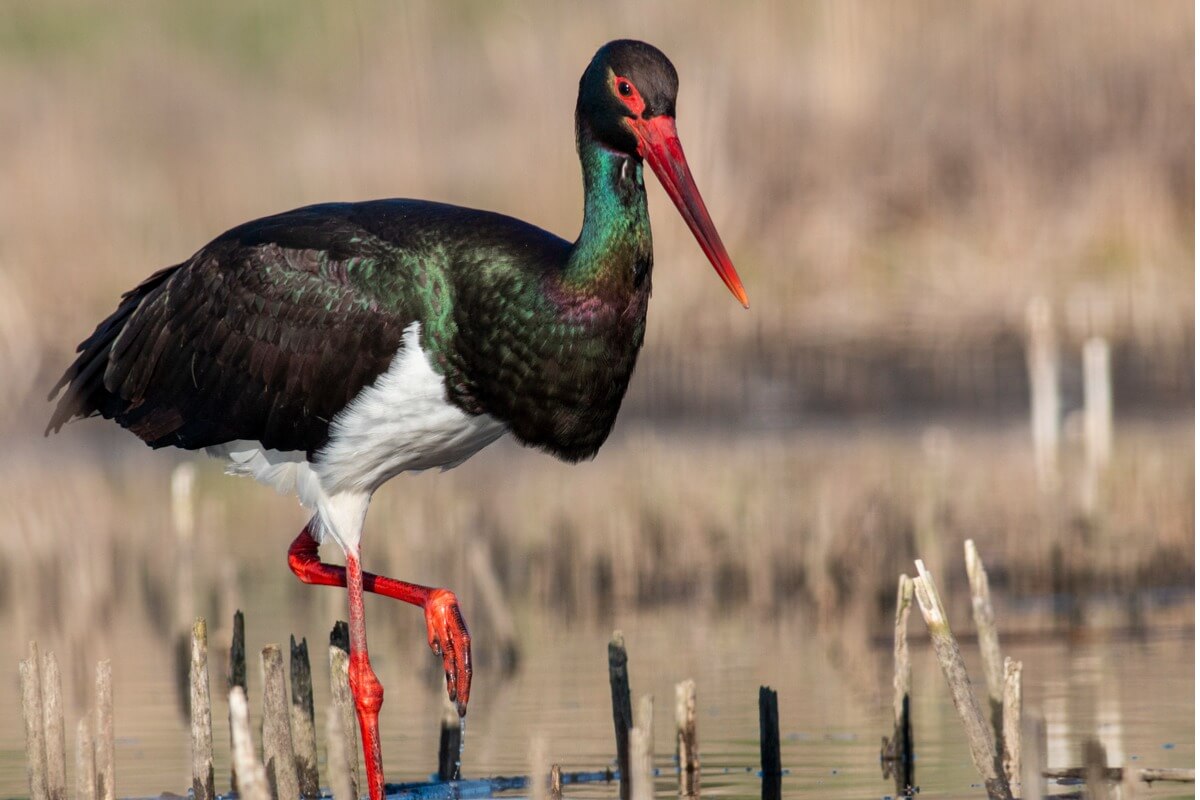
2. Iberian lynx (Lynx pardinus)
Indiscriminate hunting and two major epidemics in the rabbit population during that same period were the cause of the brutal decline in Iberian lynx specimens. It’s the only big cat that inhabits Europe naturally. It’s also endemic to the Iberian Peninsula —in fact, you can only find them in the Doñana and Sierra Morena parks. Because of this, it’s the most threatened feline in the world.

3. Bearded vulture (Gypaetus barbatus)
This bird has a habit of dropping the bones it collects from a great height, so that they break against the ground and enables it to eat the marrow. Power lines, poisoned baits, and hunting have reduced this species to a group of less than 300, which lives in the Pyrenees. It’s believed that its population will keep decreasing in the near future.
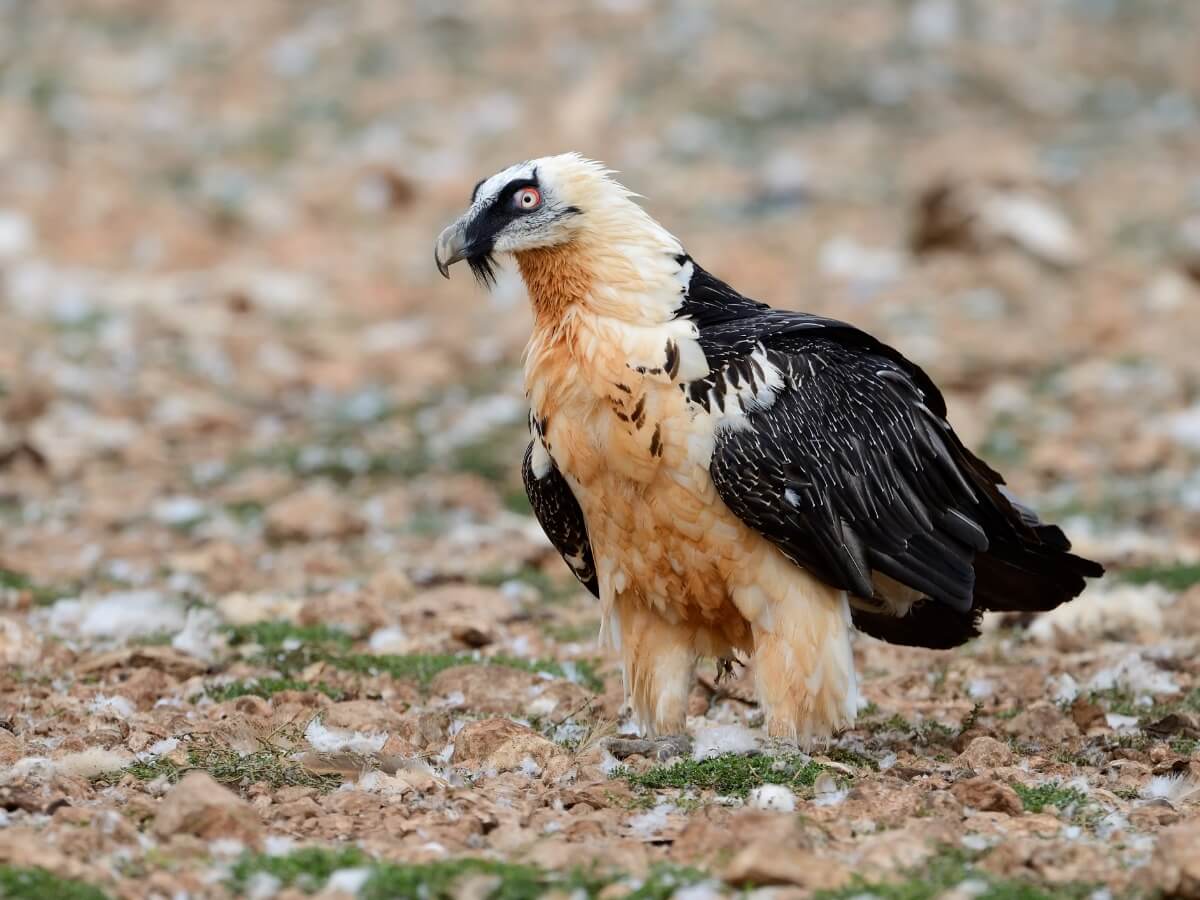
4. One of the most forgotten animals in danger of extinction in Spain: the grouse
The Cantabrian grouse (Tetrao urogallus cantabricus) can only be seen in a small area between Lugo and Cantabria in Spain. Although conservation plans for these ground birds have been proposed, only Asturias has approved them, so their population continues to decline. Hunting, habitat destruction and competition with other species have placed the grouse in critical danger of extinction.
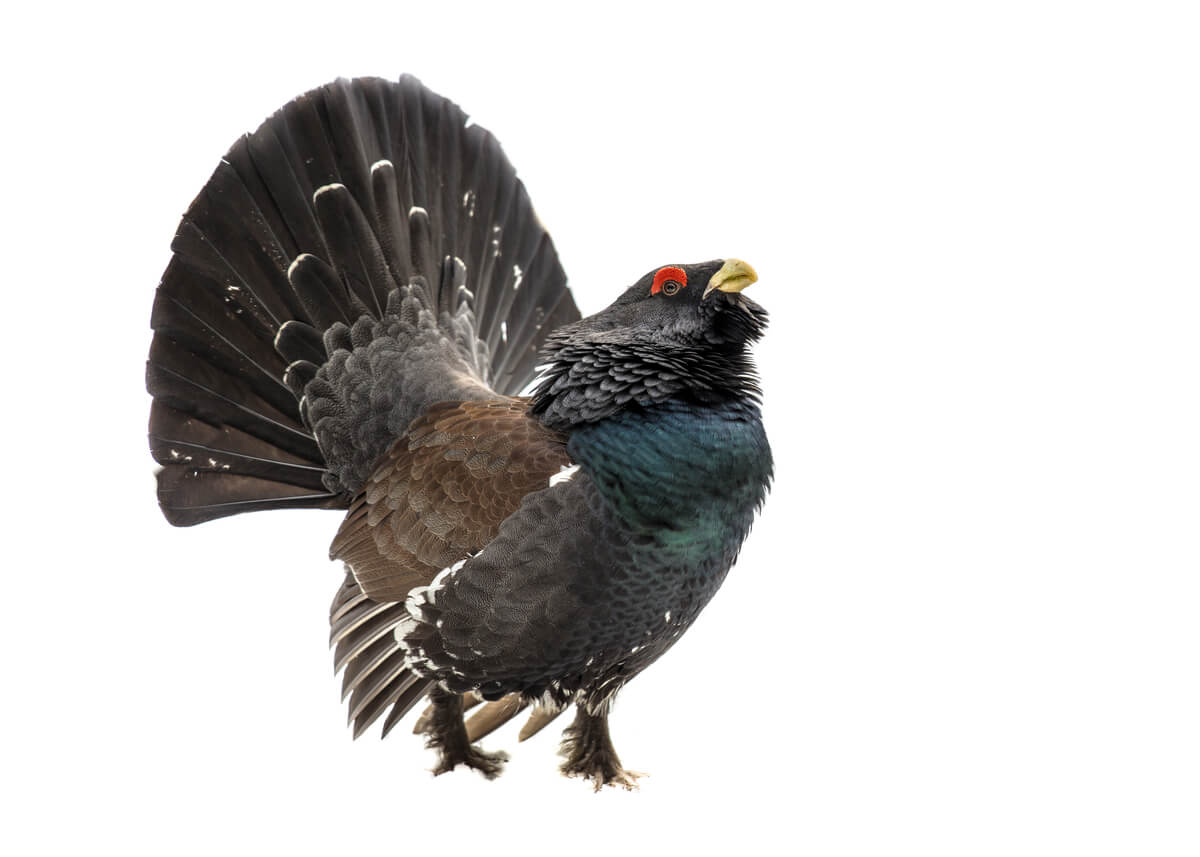
5. Brown bear (Ursus arctos arctos)
The brown bear lives mainly in the north of Spain, in the steepest mountainous areas, where the human impact is less. The main vulnerability of this ursid lies in its small population of only around 200 specimens. Illegal hunting and the destruction of habitats are the main dangers for them, and the human impact is significant.
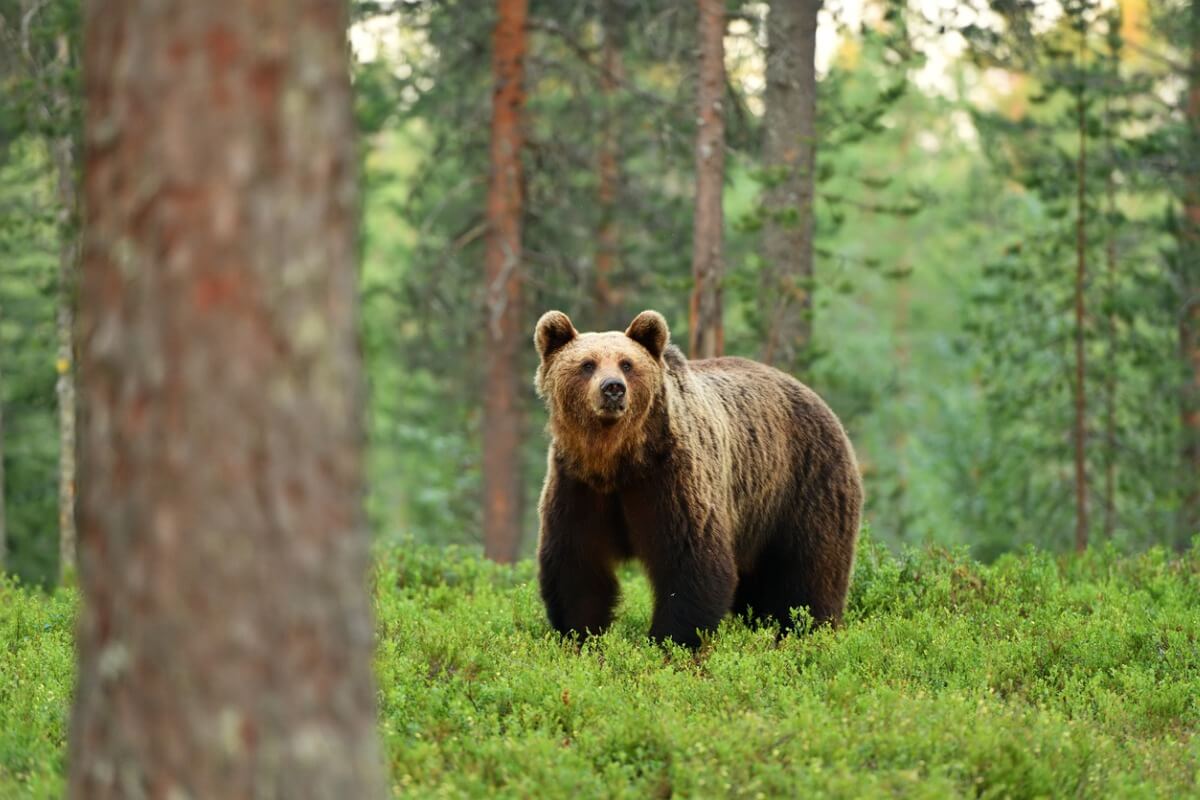
6. Imperial eagle (Aquila adalberti)
It is the only endemic bird on the Iberian Peninsula. Their situation is endangered by the fragmentation of their habitat, electrocution on power lines, and the use of poisoned baits by livestock operators and hunters. Although they aren’t yet out of danger, their population has increased from 50 pairs to 400 in the last 50 years. It lives mainly in the Mediterranean forests and the Central mountain system.
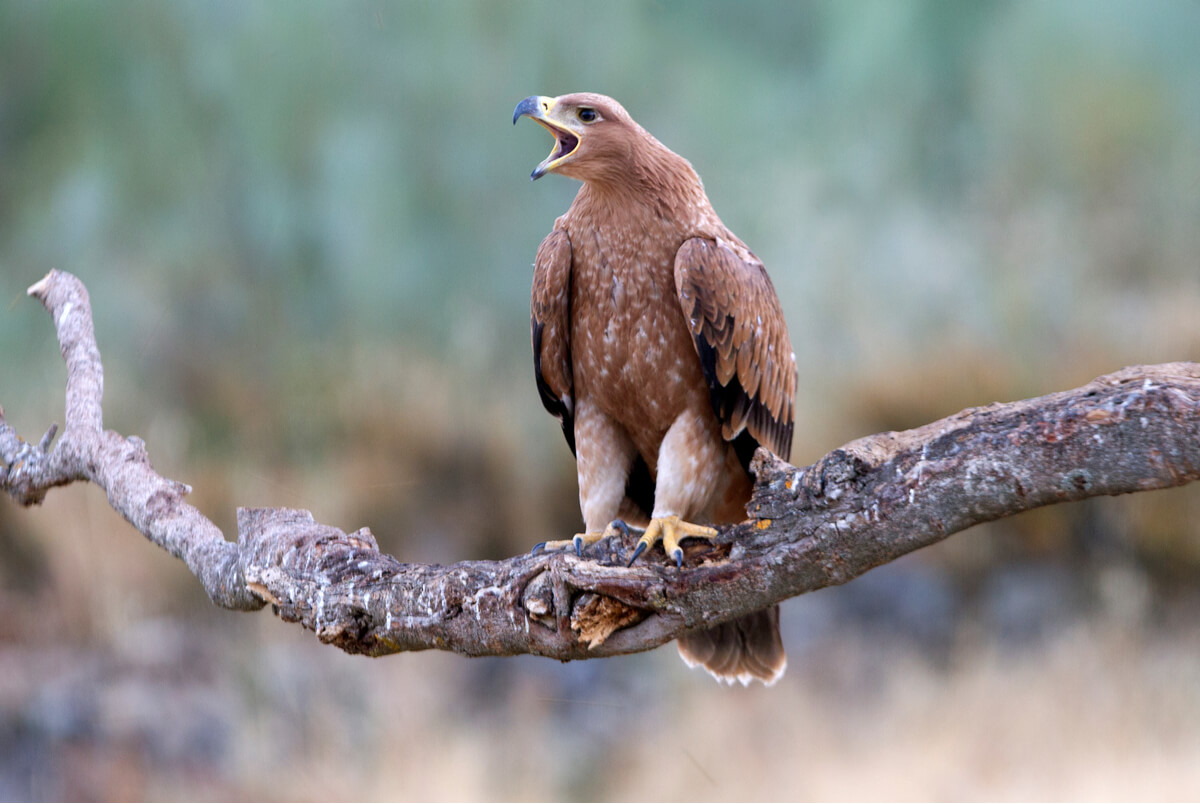
7. Monk seal (Monachus monachus)
Although it’s hard to imagine, seals can often be seen on the Spanish Mediterranean beaches. The monk seal is one of the most threatened pinnipeds, as massive construction on the Mediterranean coast and in the Canary Islands in the 1950s drove it off its resting beaches. Currently, there are small populations that are very difficult to see in the Chafarinas Islands, in Melilla.
Many of these marine mammals took refuge in coastal caves, sheltered from humans. However, when the tides rose, some of these areas were completely flooded, leaving them trapped. Hundreds of specimens drowned in this way.
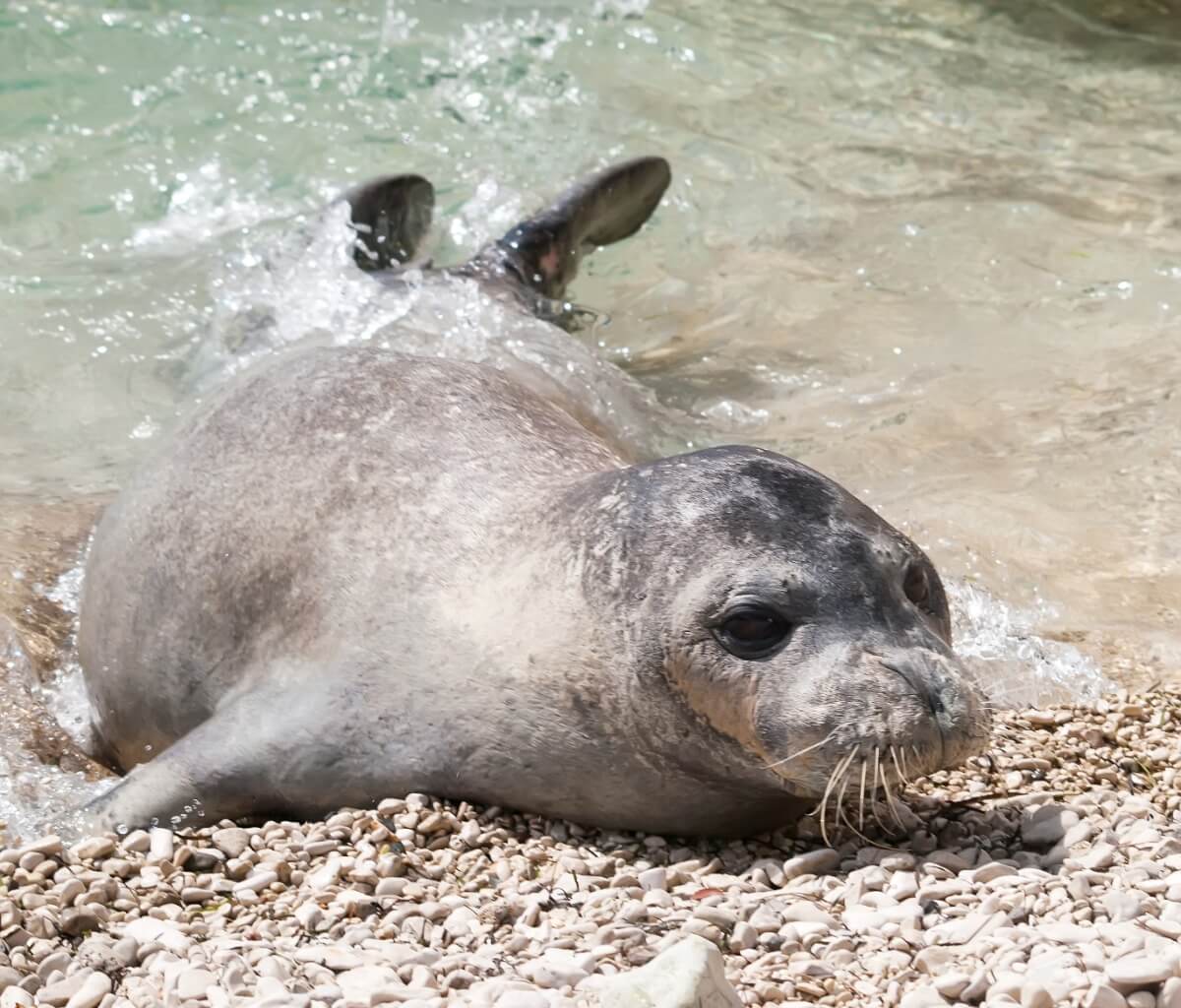
8. The common chameleon, in danger of extinction in Spain due to tourism and illegal capture
Although it can be seen throughout the entire African Mediterranean coast and southern Anatolia, the common chameleon (Chamaeleo chamaeleon) only inhabits a small portion of southern Spain and Portugal. Many mistake it for an exotic animal that has escaped from its home, but the reality is that this reptile can be found in the wild.
It is the only representative of its family in Europe, which places it in a critical situation on the Peninsula. Their main problem has also been the destruction of the habitat by the mass construction on the coast, in addition to the illegal capture to use specimens as pets. To this day, these practices are strictly prohibited.
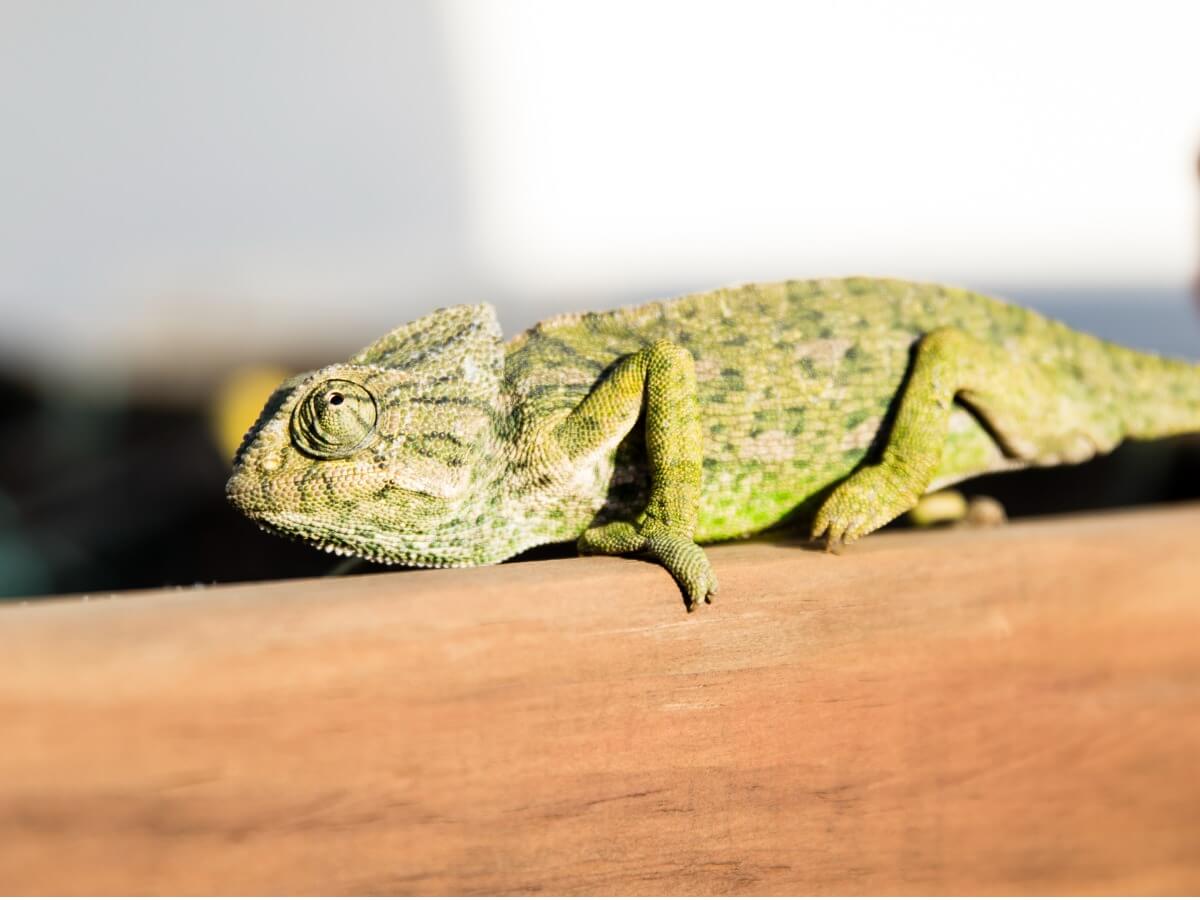
9. European mink (Mustela lutreola)
In addition to being hunted for its skin, this mustelid experienced a dramatic decrease in its population due to the introduction of a competitor, the American mink (Neovison vison), which is more opportunistic in its diet and more aggressive. The release of the American mink was due to economic interests on the part of hunters and furriers, and put the European mink in critical danger.
Furthermore, this invasive species carried parvovirus, which the European mink was much more sensitive to.
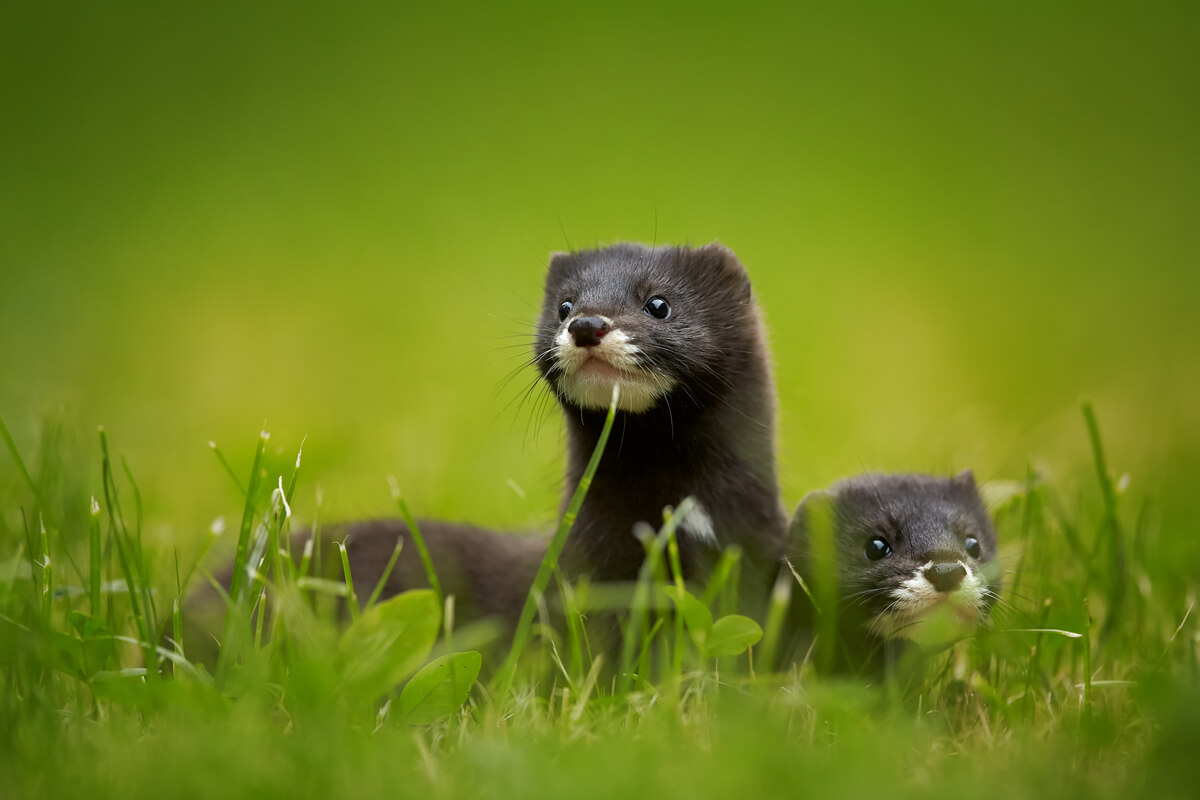
10. Giant lizard of El Hierro (Gallotia simonyi)
Endemic to the island that gives it its name, this reptile suffers from the same problem as other species that live in places with reduced areas to live in. They’re much more vulnerable animals when their habitat is destroyed. On the island of El Hierro itself there’s a recovery center, but only about 200 specimens remain in the wild.
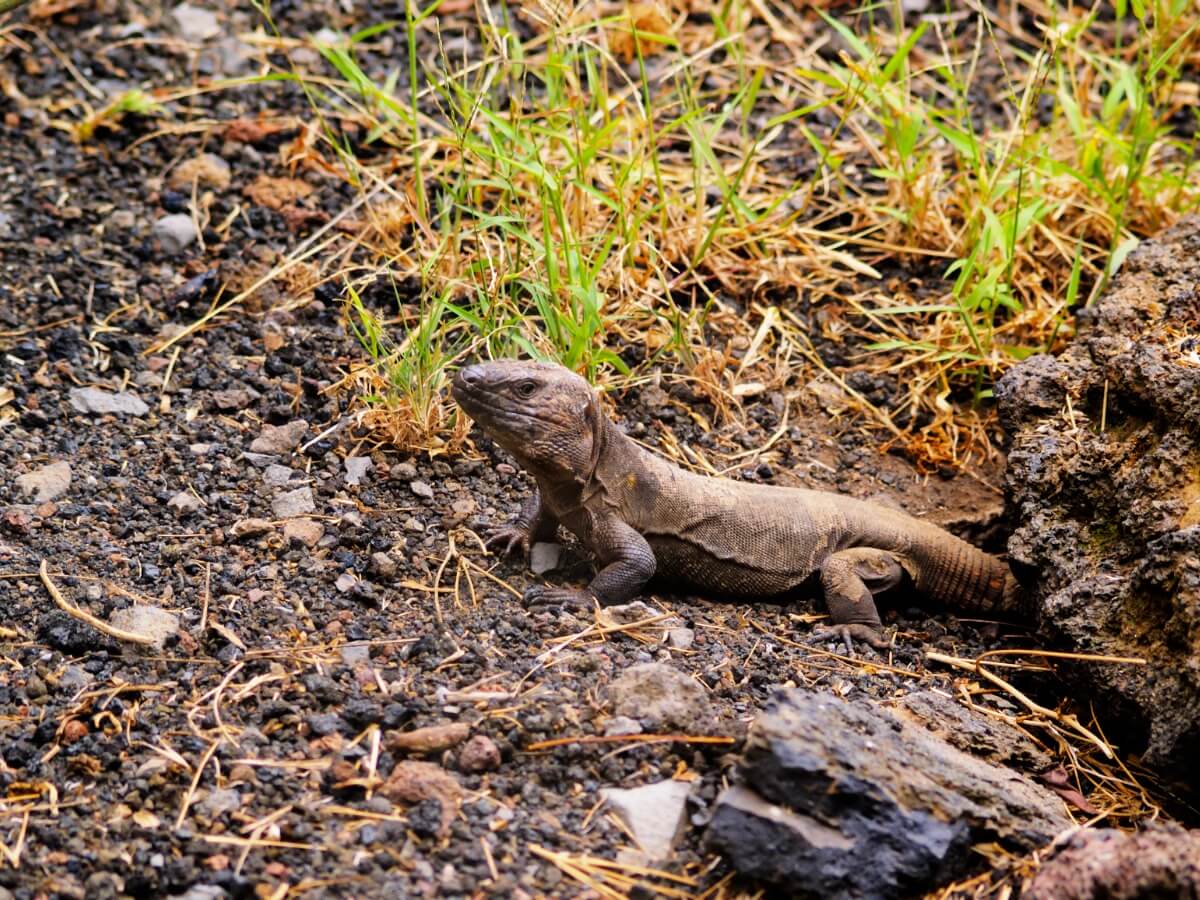
11. Mediterranean tortoise (Testudo hermanni)
Long ago, this chelonian lived in the vegetation of the Mediterranean coasts, but the mass hunting of this animal almost wiped out its population. In fact, although it has been banned as a pet, it can still be found in some homes. In 2017, 300 specimens were released off the coast of Catalonia, but the species is still critically endangered.
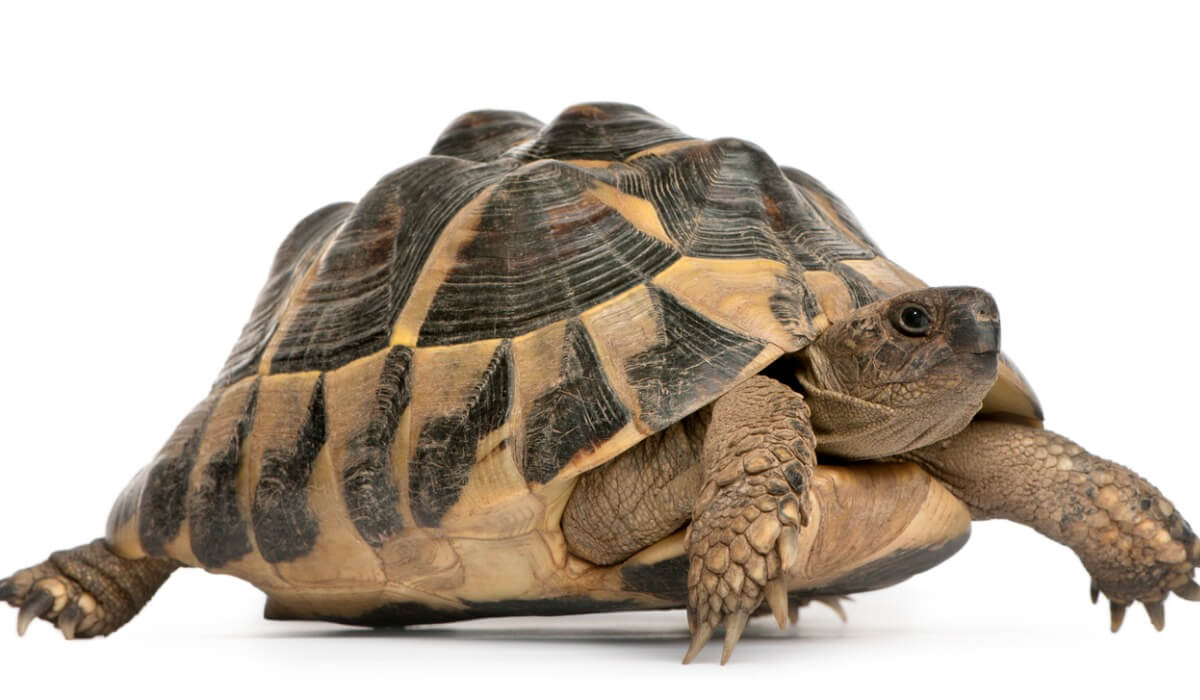
How to prevent the increase of endangered animals in Spain?
There are many bodies concerned about the conservation of species. Organizations implement conservation plans and expand natural parks. They also look to increase penalties for crimes against nature, controlling invasive species, and recovering destroyed habitats.
However, these organizations usually find an enormous obstacle that gets in the way of their objectives: economic interests. Although it may seem impossible, supporting these projects and putting pressure on the organizations responsible for protecting the environment can have a real impact.
Spain is one of the countries with the greatest biodiversity in Europe, but also one of the most vulnerable: let’s look after its fauna.
All cited sources were thoroughly reviewed by our team to ensure their quality, reliability, currency, and validity. The bibliography of this article was considered reliable and of academic or scientific accuracy.
- Situación actual del Listado de Especies Silvestres en Régimen de Protección Especial y Catálogo Español de Especies Amenazadas. (2021). Gobierno de España. https://www.miteco.gob.es/es/biodiversidad/temas/conservacion-de-especies/especies-proteccion-especial/ce-proteccion-listado-situacion.aspx
-
Lizana, M., & Montesinos, J. L. V. (2007). La diversidad animal de España. Documentación administrativa.
-
Capacete González, F. J. (2019). Protección antes del peligro de extinción. In dA Derecho Animal: Forum of Animal Law Studies (Vol. 10, No. 2, pp. 0078-82).
-
del Quebrantahuesos, F. C. (2006). El Quebrantahuesos: apuntes sobre su biología. Revista Ecosistemas, 15(2).
-
ESTRAT, A. El urogallo cantábrico: Situación actual y actuaciones.
-
González González, M. A. Biología y conservación del urogallo en un hábitat mediterráneo= Biology and conservation of the Capercaillie in a Mediterranean environment.
- Información estrategia control visón americano. (2021). Gobierno de España. https://www.miteco.gob.es/es/biodiversidad/publicaciones/pbl-fauna-flora-estrategias-eei-vison-americano.aspx